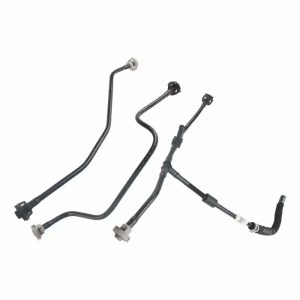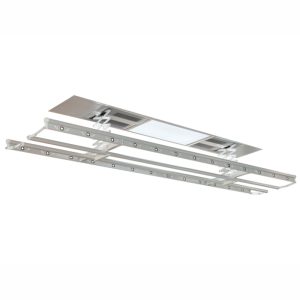One-stop Bending Solutions For Wires, Tubes And Pipes
One-stop Bending Solutions For Wires, Tubes And Pipes
Today, as the application of fully automatic pipe bending machines becomes more and more widespread, in addition to its technical principles, performance characteristics and market impact, equipment maintenance, scientific selection and expanded application in emerging fields are also the focus of enterprises. These aspects are directly related to the service life of the equipment, production stability and the long-term development of the enterprise.

Maintenance of fully automatic pipe bending machine
1. Daily maintenance
Daily maintenance of fully automatic pipe bending machine is the basis for ensuring its stable operation. Before starting the machine every day, the operator should carefully check all parts of the equipment, including lubrication system, pneumatic system, electrical system, etc. In terms of lubrication system, check whether the oil volume of each lubrication point is sufficient, such as the rotating shaft of the bending mold, the guide rail of the feeding mechanism, etc. If the oil volume is insufficient, the corresponding type of lubricant should be added in time to reduce the wear of mechanical parts.
The inspection of the pneumatic system mainly includes whether the air source pressure is normal and whether the air pipe is leaking. Insufficient air source pressure will affect the normal operation of the clamping mechanism, feeding mechanism, etc., while air pipe leakage may cause slow movement or failure. In terms of electrical system, check whether the line connection is firm, whether there is looseness or aging, and whether the indicator light on the control panel is displayed normally.
After the work is completed every day, the equipment needs to be cleaned. Remove metal debris and oil stains on the bending mold to prevent debris from entering the equipment and affecting the movement of mechanical parts. At the same time, clean impurities on the feeding mechanism and clamping mechanism to keep the equipment clean.
2. Regular maintenance
In addition to daily maintenance, regular maintenance is essential to extend the service life of the fully automatic pipe bending machine. Generally speaking, a comprehensive regular maintenance is required for every 1,000 hours of operation of the equipment.
For mechanical parts, the bending mold should be precision tested to see if there is wear or deformation. If the mold is severely worn, it will affect the bending accuracy of the pipe and needs to be replaced in time. The ball screw and guide rail of the feeding mechanism should also be checked to measure whether their clearance is within the allowable range. If the clearance is too large, it needs to be adjusted or replaced.
Regular maintenance of the electrical system includes checking whether the parameter settings of the CNC system are correct, backing up important programs and data, and preventing data loss. At the same time, the servo motor, drive, etc. are tested for performance to ensure that they are operating normally.
The hydraulic system (for hydraulically driven equipment) should regularly replace the hydraulic oil, clean the oil tank and filter, and prevent impurities in the oil from clogging the oil circuit and affecting the service life of the hydraulic components.
How to troubleshoot the fully automatic pipe bending machine
1. Common faults and solutions
During the operation of the fully automatic pipe bending machine, various faults may occur. Timely and accurate troubleshooting and solving faults are the key to ensuring production continuity.
If the bending angle of the equipment is inaccurate, there are many possible reasons. First, check whether the parameter settings in the CNC system are correct, such as the bending angle compensation value, feeding length, etc. If the parameter settings are correct, check whether the bending mold is worn or improperly installed, and whether the positioning accuracy of the feeding mechanism is deviated. Take corresponding measures for different reasons, such as resetting parameters, replacing molds, or adjusting the feeding mechanism.
When the equipment has an unstable feeding fault, it may be that the servo motor of the feeding mechanism has a problem, or the guide rail is poorly lubricated or there is a foreign object stuck. You can first check the operating status of the servo motor to see if there is abnormal noise or overheating. If the motor is normal, check the lubrication of the guide rail and whether there is foreign matter, and clean and lubricate it.
If the equipment cannot start normally, first check whether the power is on and whether the emergency stop button is pressed. If the power supply and emergency stop button are normal, check whether the fuse of the electrical control system is blown, whether the contactor is normally energized, etc., and gradually troubleshoot the electrical fault.
2. Fault prevention measures
To reduce the occurrence of faults, enterprises can take some preventive measures. Establish equipment operation files, record the equipment’s operating time, fault conditions, maintenance records, etc., and analyze the file data to understand the equipment’s operating rules and discover potential fault hazards in advance.
Regularly train operators to improve their operating skills and fault judgment ability. Operators who are familiar with the performance and operating specifications of the equipment can reduce faults caused by improper operation. At the same time, formulate a complete equipment management system, clarify maintenance responsibilities, and ensure that maintenance work is implemented.
Key points for selecting fully automatic pipe bending machines
1. Clarify production needs
When choosing a fully automatic pipe bending machine, the company must first clarify its own production needs. Consider factors such as the material of the pipe, the diameter range, the bending angle, and the production batch. For example, if the company mainly processes thin-walled copper pipes with smaller diameters and has a large production batch, it should choose equipment with fast feeding speed and high bending accuracy; if it processes large-diameter thick-walled steel pipes and requires complex multi-curvature bending, it is necessary to choose equipment with strong driving force and multi-axis linkage functions.
At the same time, future development needs should be considered. If the company plans to expand its production scale or expand its product range, the selected equipment should have a certain upgrade space and compatibility to adapt to future production changes.
2. Examine equipment performance parameters
The performance parameters of the equipment are an important basis for selection. Mainly including bending accuracy, maximum bending radius, minimum bending radius, feeding length accuracy, production efficiency, etc. Bending accuracy directly affects product quality. For industries with high precision requirements, such as aerospace, equipment with a bending angle accuracy within ±0.1° should be selected.
The maximum bending radius and the minimum bending radius determine the bending range of the pipe that the equipment can process. Enterprises need to choose according to the bending requirements of their own products. The feeding length accuracy is related to the accuracy of the pipe feeding, and the production efficiency affects the production capacity of the enterprise.
In addition, the stability and reliability of the equipment should be examined. You can understand the reputation and reputation of the equipment manufacturer, and check the market share and user evaluation of its products. At the same time, inspect the operation of the equipment on the spot and test the performance of the equipment under continuous working conditions.
3. Consider after-sales service
Perfect after-sales service is a factor that cannot be ignored when enterprises choose fully automatic pipe bending machines. It is inevitable that the equipment will fail during use. Timely after-sales service can quickly solve the problem and reduce downtime.
When selecting, it is necessary to understand the manufacturer’s after-sales service system, including whether installation and commissioning, operation training, fault repair and other services are provided.
Application fields of fully automatic pipe bending machines
1. New energy vehicle field
With the rapid development of the new energy vehicle industry, the demand for battery cooling pipes, air conditioning pipes, etc. is increasing. These pipes are usually made of corrosion-resistant, lightweight aluminum alloy or stainless steel, and have high requirements for bending accuracy and sealing.
With its high-precision bending ability and stable performance, the fully automatic pipe bending machine can meet the processing needs of new energy vehicle pipes. For example, in the processing of battery cooling pipes, the equipment can accurately control the bending angle and radius to ensure the flow and heat dissipation effect of the pipes, and improve the service life and safety of the battery.
 |
 |
2. Smart home field
In smart home products, such as smart clothes hangers and smart curtain brackets, various curved pipes are often needed. These pipes must not only meet certain strength requirements, but also have beautiful appearance.
Fully automatic pipe bending machines can process pipes of various complex shapes, such as arcs, waves, etc., to meet the design requirements of smart home products. At the same time, its efficient production capacity can adapt to the small batch and multi-variety production characteristics of the smart home industry, providing a guarantee for enterprises to quickly respond to market demand.
The maintenance, troubleshooting, scientific selection and application of the fully automatic pipe bending machine in various fields are all the key points that enterprises need to pay attention to during use and development. Doing a good job in these aspects can give full play to the performance of the equipment, improve the production efficiency and competitiveness of the enterprise, and lay a solid foundation for the sustainable development of the enterprise.
If you need a pipe bending machine, please feel free to contact us bender@antishicnc.com. We have professional staff to answer your questions at any time.
Tag:Fully automatic pipe bending machine、Pipe bending machine、Automatic pipe bending machine
Learn More:
Application and advantages of pipe bending machines in furniture manufacturing
How to choose a fully automatic pipe bending machine suitable for shipbuilding?
Our equipment has CE, ISO quality inspection certificate, so the quality is guaranteed to be cost-effective. According to different processing requirements, machines can be customized to fit for your usage, to provide customized services. In the processing period, we strictly control the production process, to ensure the quality of clearance, standardize the process, strict implementation.
